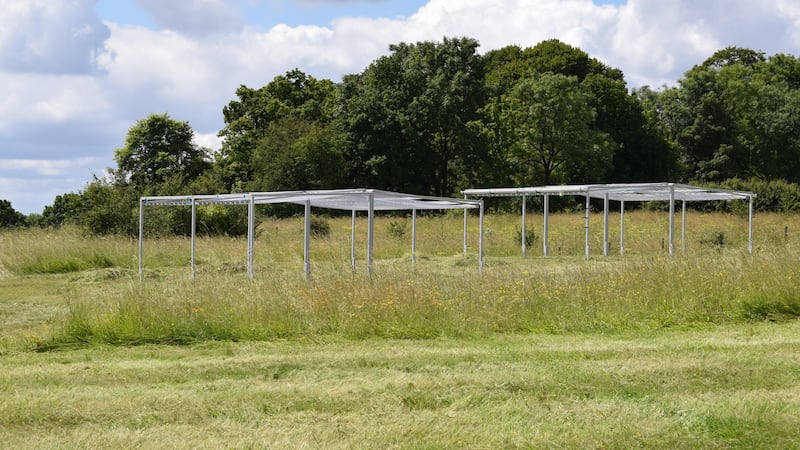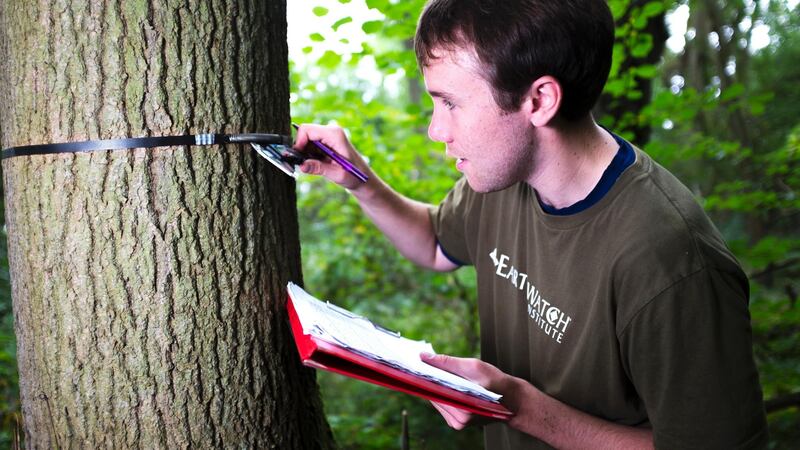Why did the woodmouse cross the road? Nigel Fisher, conservator of Wytham Woods, still doesn't know why; for the moment, he can only surmise that the mouse was making a fool of him.
He had been explaining to some visitors how ecological barriers work; he had pointed out a narrow tarmac road as the kind of obstacle that would absolutely limit the forest territory of woodmice. Whereupon the little creature contradicted him, in full view of his guests, by scuttling across it. Definitive statements in science have a way of posing new questions.
Fisher says Wytham Woods, near Oxford, have been the object of more long-term, intensive and varied ecological research than any other patch of land on the planet. Charles Elton, one of the key figures in 20th century ecology, worked here throughout his life. Yet despite seven decades of exploration of every aspect of its interconnected species, from microbes to blue tits to mighty oak trees, producing hundreds of published studies, the questions still massively outnumber the answers.


One mightn't associate Oxford University, which owns the woods and manages the research, with humility, but that's the lesson nature teaches us here.
“On a good day,” says Fisher, “I think I might understand 5 per cent of how this woodland system works. On a bad day, much, much less.”
Understanding any landscape in these islands demands a knowledge not only of nature but of culture. Some of Wytham is described as “ancient woodland”, but that means there has been tree cover here constantly for many centuries, not that the trees have been unmanaged by humans. Recognising past signs of human management often helps us to grasp how its species composition has evolved into the present, and the options for its evolution in the future – as well as posing more questions.
Fisher points out a wood bank running along most of one side of the road that the woodmouse had so cheekily crossed. The slight ridge looks like a natural feature now, carpeted in spring plants and leaf litter. But farmers once dug it out and banked it up, and probably planted a living hedge of hazel on top of it, to restrain livestock from entering the woodland.
Ancient forest
So the remnant woodbank tells us that there once used to be grazing land on the other side of the road, where there are now woods that, superficially at least, are almost identical to the older forest. There is, however, one difference that is very evident on this spring day. The ancient forest is resplendent with bluebells, but there isn’t a single bloom across the way in the regenerated area.
“That parkland hasn’t been grazed since the 17th century,” Fisher says. “We simply don’t know why the bluebells haven’t colonised it, the way that the trees and other plants have.”
This sharp visual contrast offers a vivid image of how difficult it may be to restore the full community of plants and animals from any past period, once the ecosystem has been disturbed and transformed by human management. And this difficulty isn’t confined to woodland plants.
This problem has been examined in enormous detail for more than 30 years in one of Wytham's open areas. A study known as the Charlie Gibson Experiment has applied different grazing regimes to calcareous (limestone and chalk) grassland. This is a once common but now very threatened ecosystem associated with traditional pastoral farming.
The experiment’s aim is to see how varying forms of grazing affect the natural return rates of the system’s typical plants, once they have been eliminated by the fertilisers, herbicides and pesticides used by intensive agriculture.
The return rates, Fisher says, are often dauntingly slow. At current rates, it may take some plants 150 years to move 100 metres. As for the complex soil structures that sustain the whole system, with their unique microfauna and microflora, it may take 350 years for them to fully regenerate over this same short distance.
The woods also tell stories of worryingly slow recovery of species lost to the hectic pace of change in our period. An enclosed and uncontrolled deer population overgrazed the shrubs that make up the forest’s understory. The forest floor was almost bare in some areas up to the late 1990s. Fifteen species of migrant birds, including the nightingale and several warblers, disappeared along with this prime nesting habitat. Some of the shrubs have come back, but none of the birds have yet returned.
The open fields are also the site of numerous other experiments. One simulates the long-term drought that is a likely consequence of climate change. Another tries to reproduce a Mediterranean habitat in Britain, using underground heating cables along with other devices. One company is testing the optimum delivery height for drone-launched pods, packed with seeds, to be used in reforesting remote degraded areas thousands of miles from Oxfordshire.
The technology for these projects is very visible out in the open, less so back in the woods, at least now that they are in leaf. But if you look carefully, you can’t move more than a few yards among the trees without coming across big and small signs of scientists at work.
In many areas, all the trees have a little identification plates for life-long study. The woods are particularly famous for long-running experiments with blue tits and great tits. More than 1,200 woodcrete nesting boxes hang from branches like strange tropical fruit. Up to 9,000 tits a year are electronically tagged, their visits to feeders recorded millions of times.
Scaffolding extending to the oak canopy was originally erected for the study of winter moths. This structure has now also become essential for the study of the “carbon budget” of oak trees, telling us how much of this greenhouse gas they absorb and how much they emit at different stages in their cycle, as part of broader studies of climate change and mitigation.
Less complex but equally vital studies, with citizen scientist participation, also form part of the life of the woods, which are open to the public on request. The next day, Fisher will be teaching locals how to monitor bee populations.
“If I can send one boy or girl home with a new passion for nature,” he says, “I’ll consider my job well done.”
Loss of appreciation
You might wonder whether today’s natural scientists, in an era when ecology is so bound up with digital technology and electronic surveillance, lose their more general appreciation of nature after years of analytic study.
This doesn’t seem to be the case at Wytham Woods, if a book and a series of videos produced to celebrate the work there are anything to go by.
Introducing Wytham Woods: Oxford's Ecological Laboratory (OUP, 2010), John Kreb concludes: "For those of us who have spent many hours, weeks and years in Wytham, it is not just a source of ecological data, but also a place of great beauty. For me, it is hard to match the sensation of inhaling the scent of a carpet of damp moss on a February morning, and chewing 'bread and cheese' – the first pale green buds of hawthorn that foretell the arrival of spring."
Yadvinder Malhi, in one of the series of Wytham Woods videos entitled Laboratory with Leaves, available on YouTube, says scientific research can "give you new glasses to look at nature. The more you understand the richness and complexity of the forest, and the processes going on beyond your immediate vision, the more come to love and appreciate that forest."


















